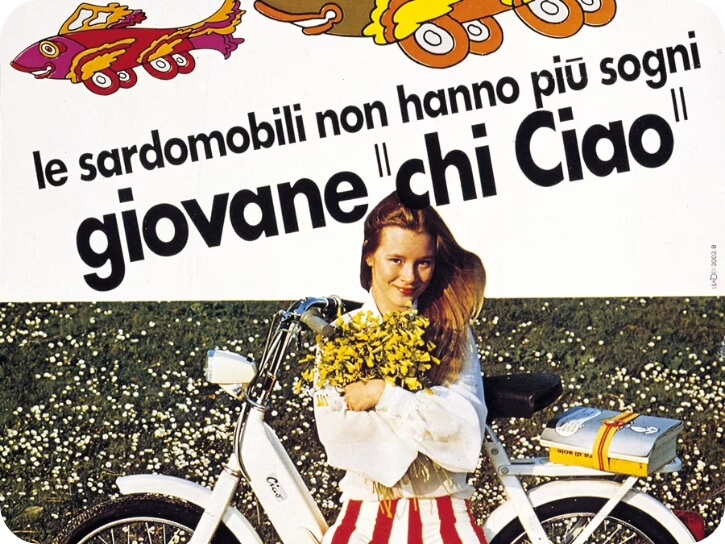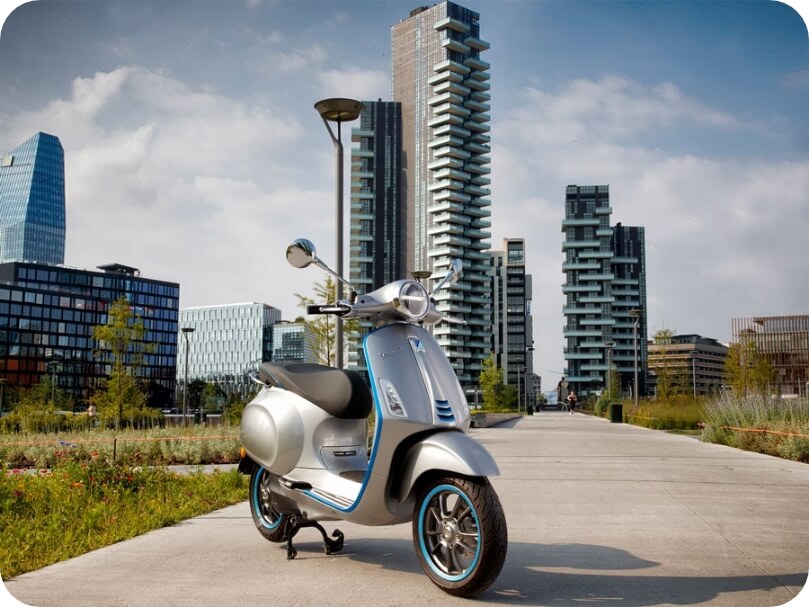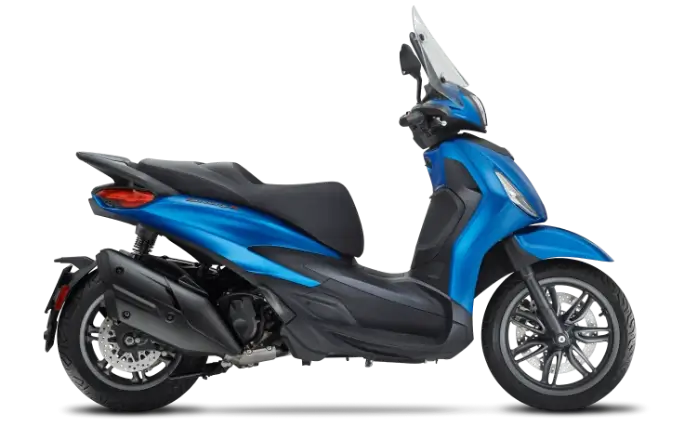A dream made in Italy. Behind every Piaggio vehicle is the story of a great adventure that started way back in Sestri Ponente, Genova, in 1884 when young Rinaldo Piaggio took over his father’s business and converted it into a marine fit out company. Little did he know that within a few years Piaggio & Co would go on to conquer the skies, the roads and the hearts of all of Italy.

THE PATH TOWARDS INNOVATION
It is the beginning of the twentieth century and Italian industry is thriving. Piaggio’s cabinetmakers are kept busy supplying furniture for luxurious Italian and foreign ships but Rinaldo senses that the sector offers limited opportunity for growth. He decides to expand into the rail sector, building and repairing carriages. This proves to be an important choice as it enables him to create a team of outstanding engineers and repair technicians.

FROM GROUND TO SKY
The advent of the First World War opens up a new frontier: aviation. As early as 1915, Piaggio starts repairing and building seaplanes, going on to acquire a Pisa-based aviation company in 1917. This move not only helps Piaggio avoid the postwar crisis but also means it is in a position to take over the Pegna-Bonmartini business, complete with its workforce.
Among the employees it inherits is Giovanni Pegna, an
extraordinarily talented aeronautical designer and engineer. Before long he comes up with the P2 (Piaggio 2) monoplane fighter and its subsequent P7 evolution, the Piaggio racing seaplane and the four-engine P108 which will be the last great Italian-built plane before the Second World War.

ENGINEERS AND INVENTORS
The recession of the Thirties fails to slow Piaggio down as it continues to take on new talents in its R&D department in the form of Giovanni Pegna, Giovanni Gabrielli, Giovanni Casiraghi and Corradino d’Ascanio. The latter immediately makes his mark in 1930 when, together with other inventors, he produces one of the world’s first helicopter prototypes. From then on, his genius will be forever linked to Piaggio’s story with the creation of a host of vehicles, including the PD1 and PD2 (Piaggio- d’Ascanio) helicopters.

FROM PAPERINO TO VESPA
The year is 1944 and the end of World War II is just around the corner. With an eye to the boom that will surely come as the country rebuilds itself, Enrico Piaggio commissions a vehicle that will allow individuals to get around on their own. The first attempt is a scooter designed by Renzo Spolti with a load-bearing frame. The MP (Moto Piaggio), in its MP1 and MP5 iterations, was nicknamed Paperino. Unconvinced, Enrico asks Corradino d’Ascanio to relook at the design. And so it is that in 1945 the MP6 prototype, with all sorts of aviation-derived innovations, is produced. A year later sees the start of production of the two-wheeler that will go on to make history: the Vespa 98.

THE LOVE FOR TWO WHEELS CONTINUES TO GROW
During the Sixties, popularity continues to increase, along with the number of vehicles produced. 1967 sees the introduction of the Ciao, a scooter closely resembling a bicycle designed by d’Ascanio 12 years earlier. It will remain in production, almost unaltered, until 2006. There is also the acquisition of Gilera in 1969 and with this, Piaggio’s standing as the benchmark in the motorbike sector is sealed.

TOWARDS A MORE SUSTAINABLE FUTURE
As part of its commitment to emission reduction, Piaggio creates the MP3 Hybrid, a three-wheel scooter with combustion engine and electric battery combination. Its variety of riding modes offer different types of interaction between the two units to optimise performance and range. Last, but not least, Piaggio continues its work with slowing down emissions with the introduction of the Vespa Elettrica. With a riding range of 100 km and requiring just 4 hours to fully charge, it is completely silent, respects the environment and delivers a performance that beats that of a traditional 50cc scooter.
PIAGGIO MODEL LINEUP

LIBERTY
Easy, chic and contemporary. The very definition of a high wheel scooter, with its modern, distinctive lines and super-comfortable footwell the Piaggio Liberty combines elegance, lightness and riding ease whether you choose the 50 cc or 150 cc version.

BV400
The urban crossover. More than two decades on from the 2001 launch of the first generation Piaggio BV400 S, the latest model gets a makeover but retains the sporty grittiness and elegant design that have shaped the history of urban mobility. In the 400cc version, the stylish and sporty BV400 S combine the dynamic qualities and grip of a high-wheeler with the exuberance and long-distance comfort of a great Tourer.

MP3
Ride the original. The Piaggio MP3 range continues to evolve with new models and automotive-derived features such as BLIS, reverse gear with camera and cruise control, all standard on the 530 Exclusive. With a highly efficient Euro 5 engine, decidedly modern design, the new series of Piaggio MP3 scooters is set to change urban mobility yet again.

PIAGGIO 1
100% electric. Piaggio 1 heralds a new generation of e- scooter. Prepare to enjoy emission-free urban mobility and the quality, technology and safety features that are synonymous with Piaggio scooters, together with everything you would expect from a premium scooter. With its stylish design, refined chassis, great handling, ample charge and inimitable attention to detail, the one and only Piaggio 1 knows when to be quiet and when to let its performance do the talking.
A DREAM MADE IN ITALY


